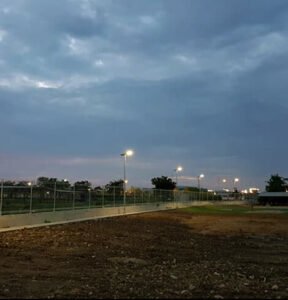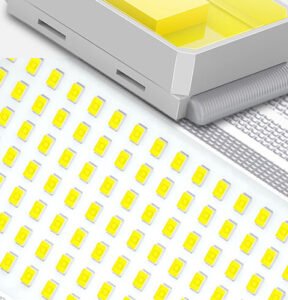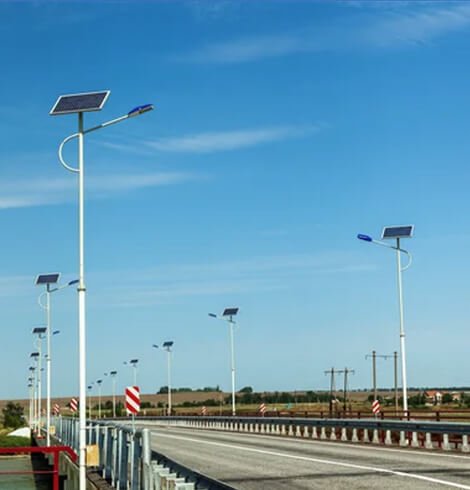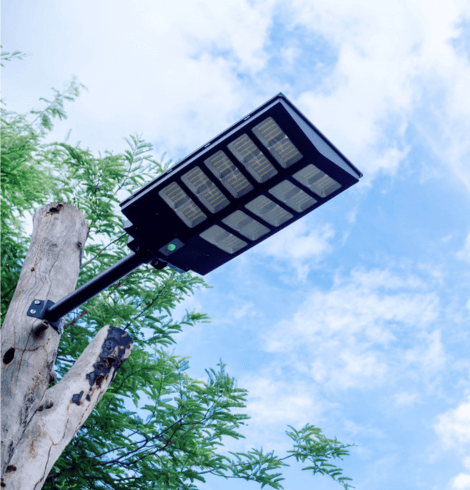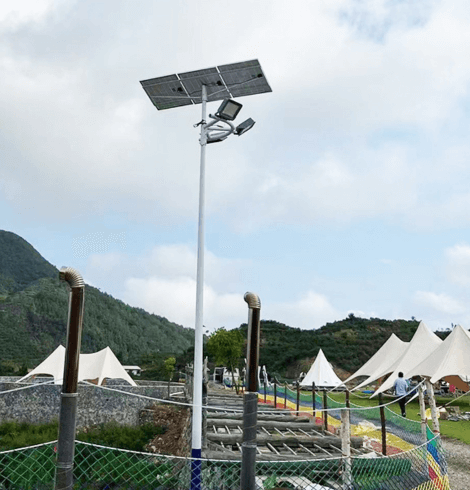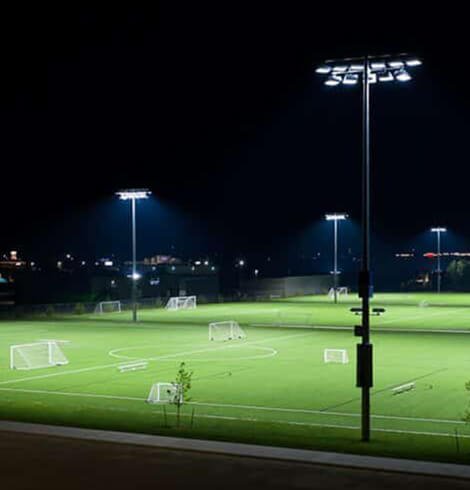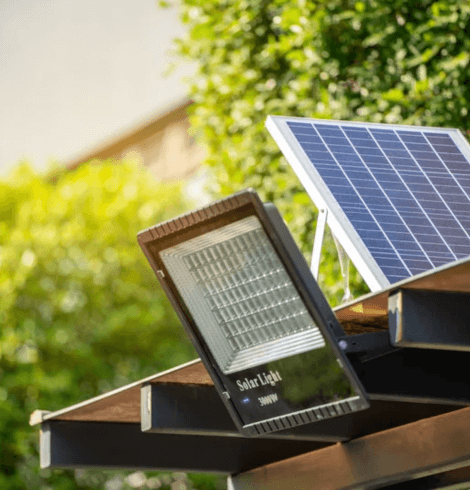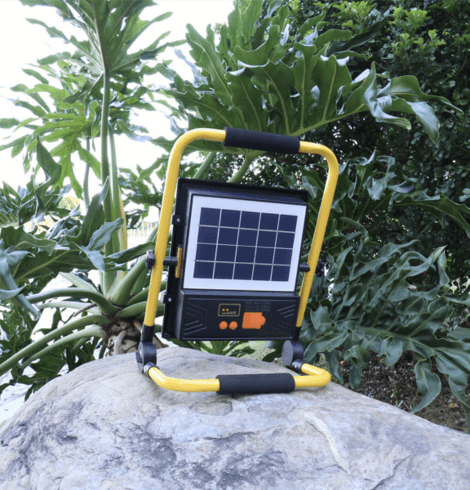Street lighting is costly—sometimes eating up 40% of a city’s electricity. That’s why more planners are turning to solar. All-in-One Solar Street Lights offer a simple solution: solar panel, battery, LED, and controller—all packed into one compact unit. No wiring. No trenching. Just mount and it works.
In this guide, we’ll walk you through how it works, what it’s made of, and why it’s becoming the go-to choice for modern lighting projects.
Table of Contents
ToggleWhat Is All-in-One Solar Street Light?
An All-in-One Solar Street Light is a compact, standalone unit that combines everything needed for off-grid lighting—solar panel, battery, LED lamp, and controller—into one durable fixture.
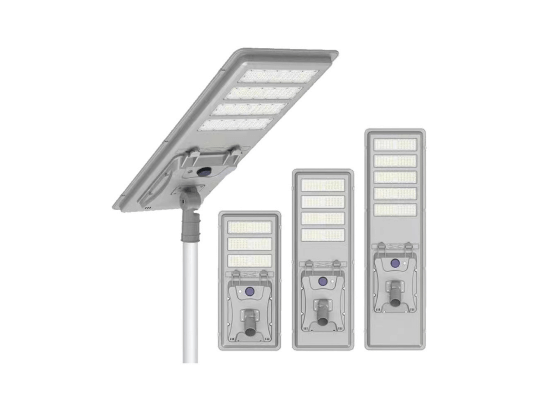
No wiring. No trenching. Just mount it, and it works. Here’s how each part plays its role:
Solar Panel
This is the energy collector. It turns sunlight into electricity during the day using monocrystalline silicon, known for high efficiency (up to 24%). The panel is fixed in place, durable, and built to last over 20 years—even in harsh weather.
Battery
The battery stores solar power for night use. Most models use LiFePO₄ lithium batteries—safe, long-lasting, and capable of 5–10 years of service. A smart BMS (Battery Management System) keeps charging and discharging safe and stable.
LED Lamp
This is the light source. LEDs deliver high brightness with low energy use—up to 200 lumens per watt. They last for years, and their optics ensure wide, even coverage across streets or walkways. Heat is managed through the metal housing.
Charge Controller
The controller regulates power between the panel, battery, and lamp. It prevents overcharging and over-discharging. MPPT technology, common in modern units, helps harvest more energy from limited sunlight. Most controllers include auto on/off based on ambient light.
Housing
Everything is sealed inside a weatherproof aluminum shell—tough, corrosion-resistant, and often rated IP65 or above. It protects the system, helps with heat dissipation, and makes installation quick and clean.
Smart Features (Optional)
Some models include motion sensors, dimming schedules, remote controls, or even wireless monitoring. These features improve efficiency and adapt lighting to real-time needs.
How Does All-in-One Solar Street Light Work?
At its core, an all-in-one solar street light follows a natural daily rhythm: it charges during the day and lights up at night. Everything happens automatically, thanks to the built-in controller, so there’s no need for wiring, switches, or human involvement.

Here’s how it works: when the sun is out, the solar panel starts generating electricity. That power goes straight into the battery, stored for later use. As daylight fades, a light sensor detects the drop in ambient brightness and turns on the LED lamp using energy from the battery. Throughout the night, the controller keeps everything running efficiently—managing power flow, enabling motion sensors or dimming if needed, and protecting the battery from over-discharge.
By morning, sunlight returns. The lamp switches off, the battery begins charging again, and the cycle repeats. This self-sufficient system works entirely off-grid, rain or shine.
Now that we understand the process, let’s take a closer look at why this design is becoming a go-to solution around the world.
What Are the Advantages of All-in-One Solar Street Lights?
All-in-One Solar Street Lights have quickly gained global traction—and for good reason. Their integrated design doesn’t just look modern; it solves real-world problems around cost, installation, and maintenance that traditional lights often create. Here are the core advantages at a glance:
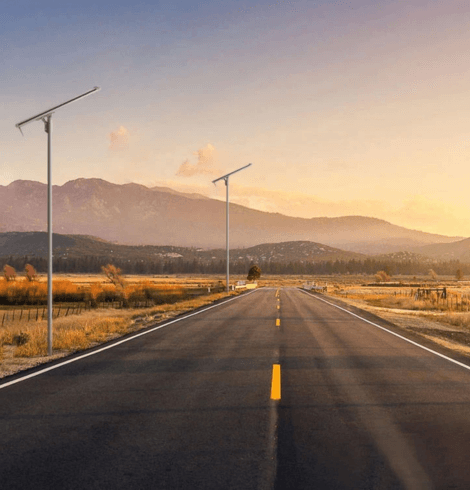
- Easy Installation – No cables, no trenching. Just bolt it on and it’s ready.
- Lower Long-Term Costs – Zero electricity bills, minimal maintenance.
- Eco-Friendly Operation – 100% solar-powered with zero emissions.
- Modern Aesthetic – Sleek, compact units blend into any environment.
- Low Maintenance – Durable parts and sealed housing reduce upkeep.
- Built-In Safety – No exposed wiring means fewer hazards or theft risks.
- Flexible Applications – Suitable for roads, parks, campuses, and off-grid areas.
- Portable & Independent – Can be relocated and works without the grid.
In short, All-in-One Solar Street Lights are more than just a clean energy solution—they’re a smart, self-contained system designed to solve real-world lighting challenges. Whether you’re working on a rural road project, upgrading lights in a public park, or planning a new residential development, these systems can save time, reduce costs, and simplify logistics.
Plus, with fewer components to manage and no ongoing energy bills, they’re ideal for teams with limited maintenance capacity or tight timelines. If you’re designing for sustainability, energy independence, or simply looking to reduce complexity, these lights are worth considering.
The next step? Let’s look at a few trade-offs to be aware of—so you can make a fully informed decision.
What Are the Limitations of All-in-One Solar Street Lights?
While All-in-One Solar Street Lights offer clear advantages, they aren’t perfect for every project or condition. Like any technology, they come with trade-offs—especially when it comes to power, flexibility, and long-term maintenance. Here are some important considerations:
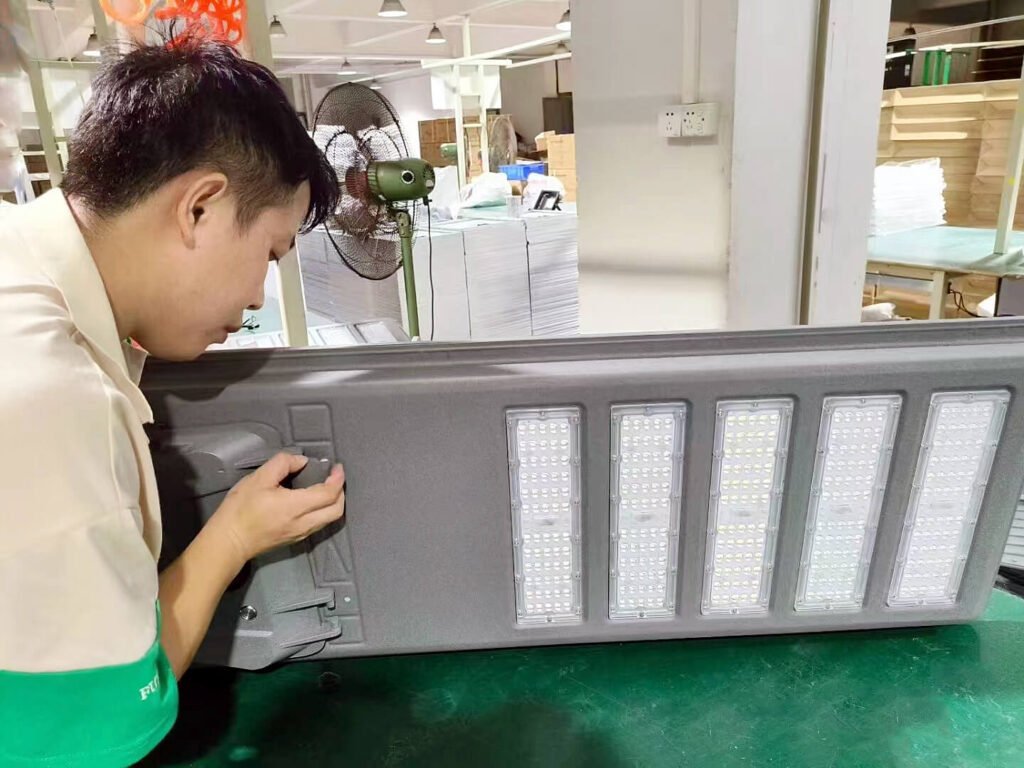
- Higher Upfront Cost – Initial investment is steeper due to built-in panel, battery, and electronics.
- Weather Dependent – Performance may drop in extended cloudy or rainy periods.
- Battery Replacement – Even good lithium batteries need replacing every 5–8 years.
- Fixed Panel Angle – Integrated design means no panel tilt adjustment for seasonal sun.
- Component Dependency – If one part fails, the whole unit might need servicing or replacement.
- Limited Output – Not suitable for very high-power lighting needs like highways or stadiums.
- Shade Sensitivity – Trees or buildings casting shadows will directly reduce performance.
- Cleaning Access – Mounted high, panels may need tools or effort to clean regularly.
In short, these lights trade raw power and adjustability for simplicity and ease. If you’re planning a project in a low-sunlight region, require high illumination levels, or need modular flexibility, these limitations matter. But if you’re aware of them—and design accordingly—you can easily work around most of these issues.
In the next section, we’ll explore exactly where All-in-One systems shine brightest and how to match them with the right applications.
All-in-One vs. Traditional Split-Type Solar Street Lights
Before making a purchase, it’s important to understand the difference between all-in-one and traditional (split-type) solar street lights. While both rely on solar power, they differ significantly in design, installation, performance, and long-term flexibility. The comparison below will help you decide which system is better suited for your project’s goals, environment, and budget.

| Feature | All-in-One Solar Street Light | Traditional Split-Type Solar Street Light |
| Design | Integrated unit with panel, battery, LED, and controller in one housing | Separate panel, battery (often in a box), and LED fixture connected by cables |
| Installation | Fast and simple — mount and go; no wiring or trenching | Requires more labor — separate mounting, cable routing, possible concrete base for battery |
| Panel Angle | Usually fixed; may not be optimal year-round | Adjustable; can be tilted for seasonal sun alignment |
| Performance Scalability | Limited — can’t upgrade components individually | Highly customizable — larger panels, batteries, or LEDs can be configured |
| Maintenance | Fewer parts exposed, low routine maintenance; whole unit may need replacement if one part fails | Components are accessible; individual parts can be repaired or replaced |
| Durability | Compact and sealed; fewer failure points, but less flexible in upgrades | More parts mean more points of failure, but easier to service or upgrade |
| Appearance | Sleek, cable-free design — ideal for urban or landscaped environments | More industrial look; visible cables and hardware may affect aesthetics |
| Transportation | Easier and cheaper to ship — single compact unit | Heavier shipping load; more volume due to separate components |
| Initial Cost | Generally lower total cost for small to medium projects | Higher upfront investment due to more components and labor |
| Use Cases | Ideal for residential areas, parks, campuses, rural roads with good sunlight | Preferred for highways, industrial zones, cloudy regions, or where high output is needed |
Bottom line is choosing all-in-one if you need a quick, clean, and low-maintenance solution for locations with reliable sun. Choose split-type if your project needs customization, high brightness, or performance in challenging conditions.
Where Are All-in-One Solar Street Lights Commonly Used?
One of the biggest strengths of all-in-one solar street lights is how flexible they are. Because they don’t need cables or grid power, you can install them in places where traditional lighting would be too costly, too slow, or simply not possible.

Here are just a few of the places they shine:
- Residential streets and village lanes – Safer neighborhoods with no added energy bills.
- Parks, pathways, and gardens – Soft, elegant lighting for public spaces and trails.
- Parking lots – Affordable lighting without trenching cables across the lot.
- Public plazas and squares – Clean design with zero disruption to existing landscapes.
- Rural and off-grid areas – Reliable light in places far from the electrical grid.
- Campuses and industrial zones – Easy to scale across large properties.
- Highways and remote roads – Especially in regions with strong, consistent sunlight.
- Bus stops and shelters – Light where people wait, with no wiring along the route.
- Security lighting – For perimeters, gates, and entrances—even motion-activated.
- Temporary setups – Portable lighting for events, construction, or emergency relief.
In short, if you need outdoor lighting and don’t want the hassle of wiring or ongoing utility costs, these solar units are often the simplest—and smartest—solution. Whether you’re planning for a quiet park path or a remote village road, there’s likely an all-in-one model that fits. Next, let’s talk about how to choose the right one for your project.
How to Choose the Right All-in-One Solar Street Light
Choosing the right all-in-one solar street light isn’t just about picking the brightest one—it’s about matching the system to your site’s conditions and performance needs. Here are the key factors to get right:
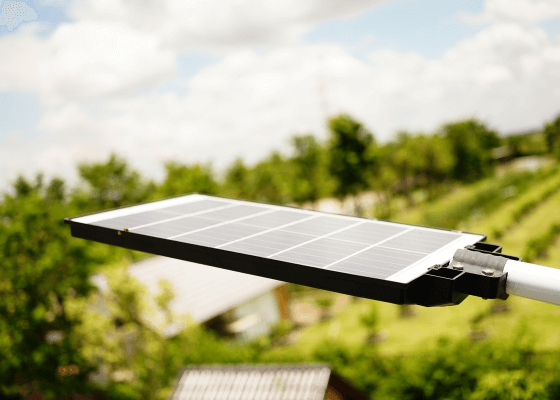
Light Output and Coverage
Start with how much light you need and where it’s going. A narrow path requires far less output than a large parking area. Check the lumen rating and ensure the beam angle fits your layout. Pole height also affects how well the light spreads.
Solar Panel Efficiency
The panel is fixed and compact, so it needs to be efficient. Monocrystalline panels are standard for their higher output per area. In low-sun regions, choose higher-wattage models to avoid undercharging.
Battery Capacity
Look for lithium iron phosphate (LiFePO₄) batteries—they’re stable, long-lasting, and better in extreme heat. Make sure the capacity supports at least 1–2 nights of backup in case of cloudy weather.
Build Quality
These lights stay outdoors year-round. Go for models with aluminum alloy housing, IP65 or higher protection, and corrosion resistance if near the coast. The fixture should be able to handle wind, rain, and heat without issue.
Control and Sensor Options
Most units come with dusk-to-dawn sensors, but motion sensors and dimming functions improve energy use. Remote control or smart monitoring is helpful for large projects but not always necessary for small sites.
Manufacturer and Warranty
Choose a supplier with experience in solar lighting. A 2–5 year warranty is standard. Reliable after-sales support matters—especially for replacement parts like batteries or controllers.
A well-matched all-in-one unit should work reliably with minimal maintenance. Think long-term: performance, durability, and ease of use should guide your decision—not just the price tag.
Maintenance Tips for All-in-One Solar Street Lights
One of the main advantages of all-in-one solar street lights is their minimal maintenance needs. But like any outdoor equipment, a bit of care ensures they keep working efficiently for years.

Keep the Solar Panel Clean
Dust, leaves, or bird droppings can block sunlight and reduce charging efficiency. Clean the panel a few times a year using a soft cloth and water. Avoid abrasive tools or detergents that could damage the glass surface.
Monitor Battery Health
Lithium batteries are long-lasting, but they do degrade over time. If the light doesn’t last through the night, the battery may be nearing the end of its lifespan—typically 5–8 years. Replace it with the correct type as recommended by the manufacturer.
Inspect the Fixture
Check the housing, bracket, and pole once or twice a year. Make sure everything is secure, watertight, and free of rust or insect buildup. Clean around the LED and motion sensor to avoid obstruction.
Check Mounting and Connections
While most components are sealed, it’s good to inspect mounting bolts and any accessible connections. Tighten any loose hardware and ensure the unit remains stable and corrosion-free.
Observe Nightly Performance
Occasionally check if the lights turn on at dusk, maintain brightness through the night, and switch off at dawn. If brightness drops or features like motion sensing stop working, it may signal a panel cleaning need or battery issue.
Final Thoughts
All-in-one solar street lights are simple, efficient, and built for long-term use—especially when speed, cost, and ease matter. From quiet streets to off-grid areas, they offer reliable lighting without the hassle of wiring or rising energy bills.
Still unsure which model fits your project? Feel free to reach out—we’re happy to help you find the right solution that works, wherever the sun shines.



